Tips for gardeners: how to grow potatoes correctly
In early varieties potatoes there is quite a lot of vitamin C. But they are poorly preserved in winter. Late varieties have a lot of proteins, dry substances, starch. There are varieties that grow superbly in sandy loam lands, and some varieties grow exclusively in well-fertilized soils. If you grow late varieties correctly, you will get a wonderful harvest that will last for a very long time.
Content:
- The best varieties of potatoes: types and description
- Soil preparation and planting dates
- Tuber preparation and planting
- Metodo landing
- Weed, pest and disease control
- Potato care: hilling, watering and feeding
- Harvesting
The best varieties of potatoes: types and description
Description of the best varieties of potatoes for growing on the site:
- Variety "Red Scarlet". Among the early varieties it is impossible not to notice one of the elite varieties bred in Holland - "Red Scarlet". The bush is low, its flowers are from purple-red to purple. The amount of the crop is influenced by the climate; up to 450-600 centners / ha are harvested. It has even red oblong tubers, one tuber weighs from 90 to 150 g. The advantage of this potatoes the fact that it does not darken, does not change its shade after boiling. Drought tolerant. Resistant to diseases, viruses.
- A very early ripe "Impala" variety. You can harvest tubers a month and a half after planting. Withstands both drought and abundance of rain. It uses melt water for its growth in spring, very high-yielding. In the south of the country, it is planted twice a season. It has snow-white flowers, high bushes. The peel is yellow. The tubers are oval, they lie perfectly and are transported. Almost does not get sick.
- Variety "Zhukovsky Early" has a high, stable yield. The flowers are red-violet. The bush is of medium height, many shoots. The skin is pinkish. The tubers are oval. Resistant to golden nematode, cancer, common scab. Productivity up to 600 kg / ha.
- The Gala variety ripens very early. It takes approximately 75 days from disembarkation to collection. Has large leaves. The bush is medium. His flowers are snow-white, there are very few of them. It is very resistant to diseases and viruses. Has an excellent taste.
- The Timo variety grows in all regions of Russia, it has good keeping quality, high resistance to diseases. Harvested up to 350-600 centners of potatoes per hectare. Its rind is yellowish.
- "Bellorosa" is an early ripening variety that gives a large harvest... Drought tolerant and grows on almost any land. The bush is high. The flowers are red-violet. The pulp is creamy, tastes great. It is highly resistant to viral diseases. Harvested up to 320 centners per hectare.
- Variety "Luck", it has good keeping quality of tubers. The flowers are white. The tubers are large, oval. The peel is creamy, the flesh is white. Its difference from others is that you need to plant it in a heated ground.
- "Nevsky" is medium early, has an excellent yield. The bush is medium, highly branched with a huge number of leaves. The flowers are snow-white. The tubers are oval, the rind is ivory, the flesh is creamy. Potatoes lies well, but retains it at low temperatures, due to the fact that it germinates very early. It must be planted in warm ground, trying not to injure the tubers, not to break off the sprouts.
- "Rocco" - medium early, has red tubers. The bush is medium, there are very few flowers or none at all. The tubers are oval, the skin is red. Linseed pulp. Productivity - 400 c / ha. Resistant to diseases, viruses. Does not require special growing conditions. Keeps perfectly.
- "Picasso", medium late variety from Holland, high yield. Stored perfectly. The bush is high. Flowers are white, blooms profusely. He has large oval tubers. The peel is yellow with pink blotches. Very resistant to diseases and viruses.
- "Zdabytok" is a late-ripening variety. Grows in the center of the country. It has oblong tubers with a yellow skin, cream flesh.
Soil preparation and planting dates
In no case should potatoes be planted where potatoes and other nightshade crops grew before that for 3-4 years. It is optimal to plant it where it grew cabbage, beet, cucumbers, legumes, radish.
Light loamy or sandy loam soil is suitable for him. The plot is prepared in the fall, bringing in bird droppings, humus, compost in an amount of 5 kg per 1 sq. m. 15 g of potassium and 30 g of phosphorus, 300 g of ash are poured there. In the spring, they dig up the ground for the second time or take a pitchfork and loosen it.
Potatoes are planted when the ground temperature reaches 6-8 degrees at a depth of 10 cm.
At the same time, trees bloom, and according to folk signs, potatoes are planted when they bloom bird cherry, leaves bloom on birch.
Tuber preparation and planting
For the prevention of different diseases the tubers are sorted out. Before that, they are heated in diffused light and an air temperature of + 14-18 ° C for about 3 weeks. After such heating, the crop ripens faster. 6 days before planting, the sprouted potatoes are placed in a solution of potassium permanganate 0.02-0.05% with boron and copper, and then left under a film at t = + 18-22 ° C. Solution consumption - 3-4 l / t.
If you see tubers with biogenic damage, then treat the planting material with a mixture fungicides and substances for growth.
To increase resistance to diseases such as scab, rhizoctonia, late blight, tubers are treated with Symbiont-1; to rhizoctonia - Planriz; to rhizoctonia, bacterial rot, late blight, fusarium - Guapsin.
Potato planting rules:
- The beds need to be dug from north to south so that the sprouts get enough light.
- Gaps of 30-35 cm are made between the bushes, you can plant them at a distance of up to 20 cm. Since it will be very convenient to spud the bushes 2-3 times.
- A distance of 80-90 cm is left between the rows. The tubers must be placed at the same depth, the rows must be even.
When planting early varieties:
- Potatoes are planted if the soil has warmed up to 6 degrees under the film.
- Tubers are laid, retreating 25 cm, since early varieties do not have very thick tops.
You can plant early and late varieties in the beds, as they make each other ripen more quickly.
Landing methods
There are three classical methods of planting potatoes: in beds, in a trench and planting "under a shovel". Potatoes can be planted in individual holes, in a trench. This is how plants are planted on sandy lands that retain moisture poorly, and even in arid climates. The best depth of the pits is 5-10 cm, the heavier the ground, the shallower they make. A handful of ash, compost is poured into the holes or in a garden bed with an indention, the tubers are put sprouts down, and the earth is poured on top.
High beds are dug on swampy soils.
If the site is on the southern slope, the ground is loose and warms up quickly, then you can plant the tubers using the "shovel" method. It is necessary to outline the rows, then make shallow holes and arrange the tubers in them.
There are also alternative methods:
- growing tubers on straw, hilling them not with earth, but with straw up to 15 cm thick
- the tubers are covered with plant residues
- plant potatoes in bags, containers
- Meatlider method, it consists in planting tubers in high beds, having a width of 0.5 m, earthen rollers are made around, this saves space, but the beds need to be constantly watered, fertilized
- Gulikh's method - 1 square meter is allocated for 1 bush.m of land, make a circle-roller from rotted mullein
- method from Hollandwhen potatoes are planted in rows located far apart on ridges, the plantings are constantly loosened.
Weed, pest and disease control
Before sprouting weeds can be very easily destroyed by harrowing. To potatoes during growth it was not oppressed by weeds, it is necessary to form high ridges when the shoots are about 10 cm in height. These ridges can be created using a milling cultivator-hiller. If you do not have it, then spud with a hoe. Hilling creates good conditions for the growth of bushes, tubers do not get sick with common scab, the possibility of their disease with late blight decreases, and the likelihood of leaf blight disease decreases. 2 weeks after the creation of the ridges, the weeds begin to germinate again. Therefore, re-hilling.
Disease protection:
- If you have clay soil on your site or you dug up the soil shallowly, then after heavy rains, moisture stagnation may occur, and from this the potatoes begin to get sick with late blight. If this happens, then it is necessary to deeply loosen the soil, to huddle the bushes.
- With the growth of bushes, the appearance of flower buds, potatoes can be processed biologicswhich make potatoes grow more intensively, they reduce the likelihood of disease. These are drugs: Immunocytophyte, Guapsin, Agat-25K, Kresacin.
- You can also spray plants with the formation of buds with a 0.2% solution of metal complexonates. Best of all helps a mixture of salts of iron, copper, cobald, zinc, made on the basis of HEDP acid. The salt mixture can be mixed in the tank with insecticides and fungicides.
- Phosphorus and potassium make plants more resistant to disease. Because of this, with an increased risk of potato late blight disease, the doses of potassium and phosphorus are increased. That is, they take for processing 1 part of nitrogen, 1.5 potassium and 2 parts of phosphorus. High hilling helps well, it prevents late blight disease and destroys weeds.
- So that the plant does not get sick with alternaria and late blight, after the tops have grown, they can be sprayed with a composition of Krezacin and Immunocytophyte, Agata-25K, Guapsin or a fungicide. Spraying can be repeated after 2 weeks, without waiting for the formation of spots, but with a different fungicide. If the plants are sick with common scab, then the bushes are fertilized with manganese sulfate (6 g / m2) or ammonium sulfate (6 g / m2).
- 2 weeks before harvesting in areas where seed potatoes grow and 10 days before digging out tubers from lands where ordinary potatoes grow for sale, the tops are mowed and harvested. This should be done 10 days after the last fungicide spray. It is also an excellent prevention against black leg disease.
- The basement is disinfected 30-45 days before the tubers are placed there. You can fumigate the room with sulfur (40-60 g per 1 m3). After fumigation, close the basement tightly for 2-3 days so that there is gas in it all this time. Half a month before folding the tubers into the basement, the walls and bins should be whitewashed with a solution of 2-3 kg of freshly slaked lime in a bucket of water (10 l), add 200-300 g of copper sulfate there. After whitewashing, the storage needs to be dried.
To prevent rot, potatoes, when they are placed in the basement, but no later than 3-5 days after harvest, must be powdered with chalk, zeolite, lime (2 kg per 1 ton of potatoes). 15-20 days after the tubers are folded into the basement, injuries on the potatoes are healed if the air temperature is 13-18 ° C, and its humidity is 90-95%. But after that, the room temperature should be 1-5 ° C, and the humidity 85-90%.
Pest control:
- Colorado potato beetles, their eggs and larvae can be collected and destroyed in small areas. If the infestation of the plantings is small, the larvae are few, then you can spray: daily infusion of wild pepper (wormwood), warthog (celandine), Oman roots (elecampane), and also decoctions of dandelion, panicle (horsetail), hot pepper fruits, sedge leaves ( poplar). The stalks of beans, marigolds, beans... They need to be sown along the perimeter of the site or along the aisles. If there is a lot of the Colorado potato beetle, then it is required to spray the plantings with insecticides.
- To destroy the potato scoop, inspect the stems, tear off the wilted ones, burn them.You can treat the plantings with insecticidal biological products: Bicol, Bitoksibacillin, Fitoverm, Akarin.
Potato care: hilling, watering and feeding
The soil near the bushes must be constantly loosened or spud... If the ground is too wet, then drainage must be done. First, the soil is loosened 6 days after landing tubers when seedlings have not yet formed. If the soil is not mulched, then it can be loosened with a harrow. Then the loosening is repeated when a hard crust appears.
If the summer is too hot and dry, and also if you cannot water the plants often, then do not huddle the bushes, it will be enough to loosen the soil.
And in the northern regions of Russia, where the summer is not so hot, precipitation often falls, it is imperative to huddle the bushes. Where there may be frosts before June, the potatoes are spud as soon as the first shoots appear. Spud in the evening or early in the morning after a heavy glaze... When the height of the stems reaches 12-15 cm, then you need to spud and water them, and after 20 days, spud and water a second time.
Watering, depending on the weather and soil condition:
- If you see that the tops have started to wither, then the potatoes need to be watered.
- When watering, the soil should be moist to a depth of 40-50 cm, the rate of water consumption is 50 liters per 1 m2.
- It is best to pour water into the furrows, since otherwise watering plants are more affected by fungi.
- In hot summer, you should not water during the day, only in the morning.
Plants are fertilized one month after planting: in the south - in May, in the north - in June. For 1 m2 of soil, 10 g of urea, 20 g of superphosphate and 10 g of potassium sulfate are dissolved in water, and watered, but if you water along the furrows, then sprinkle fertilizers into a separate groove dug at a distance of 12 cm from the row. Can you feed chicken droppings - 200 g per 1 m2. If the bushes are lush, then do not add nitrogen to the solution. Then fertilize the bushes when buds appear, and the last time after flowering ends.
In addition, it is recommended to spray the bushes 2 times with a 2% solution of a mixture of phosphorus, potassium and Bordeaux liquid. Such feeding will protect plants from pests and disease. Pull up weeds, carry out hilling, loosening. If there are a lot of weeds, then you can use "Panther", "Targu", "Fuzilad".
Harvesting
The earliest collection of tubers is at the end of June. At this time, if you look at the bushes, you will see that they have faded, and the leaves have begun to fade. Dig out one bush first, if the tubers are 3 cm in diameter, then you can dig further. Finish digging the tubers in the fall before the first frost.
Dig up the tubers carefully so as not to damage them.
Then they are dried in the air for 3-4 hours in dry weather, and if there is a lot of precipitation, then 2-3 weeks in temporary piles. Seed tubers are planted in diffused light for a week before being placed in the basement. Before being placed on storage potatoes must be sorted out. Prepare the storage in advance, clear it of debris.
When growing tubers you need:
- Plant only those varieties that are recommended for planting in these areas, they must be resistant to diseases and pests.
- Do not disturb the fruit change, do not plant potato close to tomato and other nightshades, since they have the same diseases.
- It is good to select tubers for planting, properly process them. Make sure that tubers are not affected by blackleg, nematodes and other diseases.
More information can be found in the video.



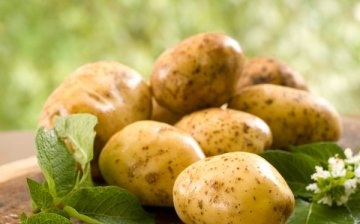
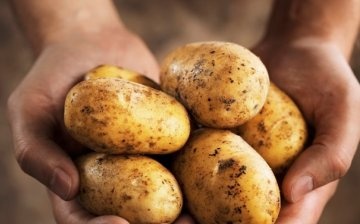
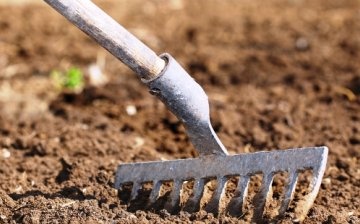
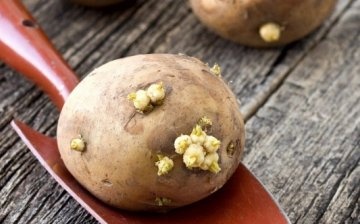
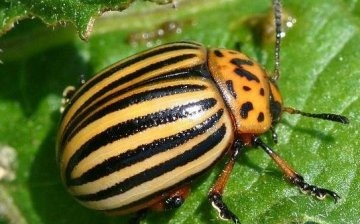
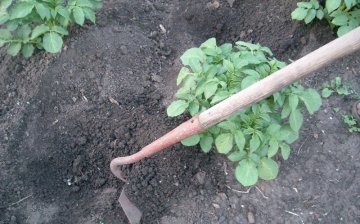
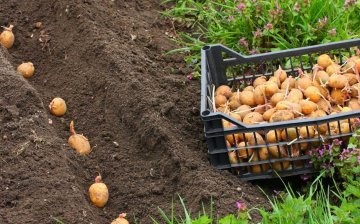









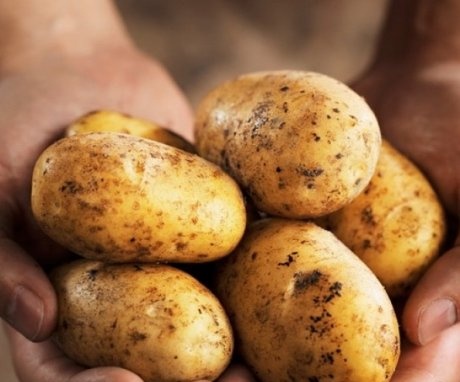

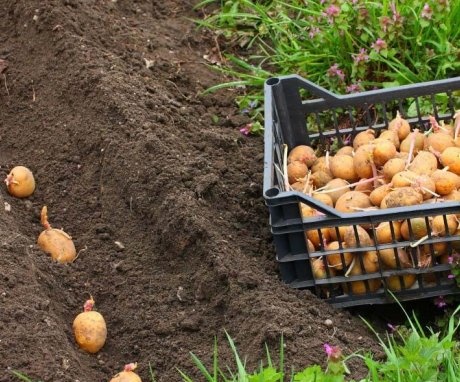
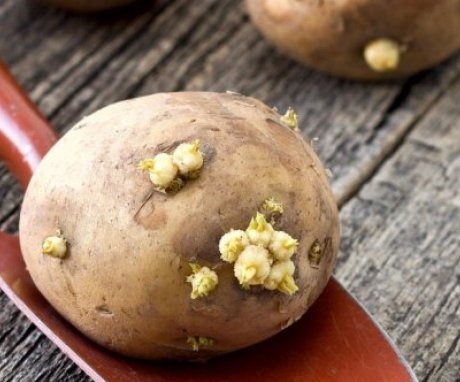
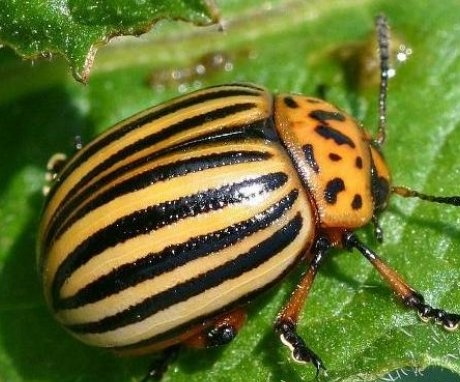
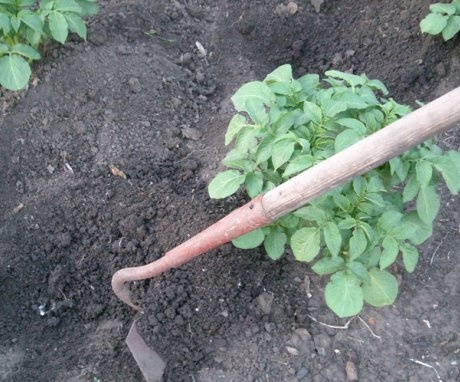

From the article I learned several interesting techniques for growing potatoes, which allow you to get a high yield. For example, treating tubers with fungicides and growth stimulants has never done this. The correct arrangement of the beds, from north to south, too, has not yet been tried and arranged the beds, focusing on their site, along or across it.